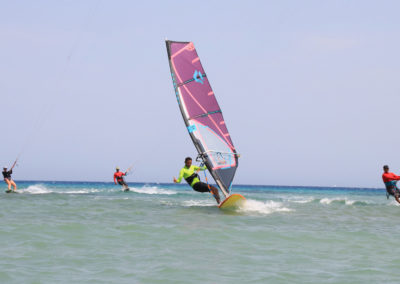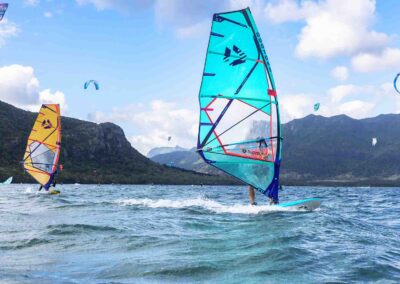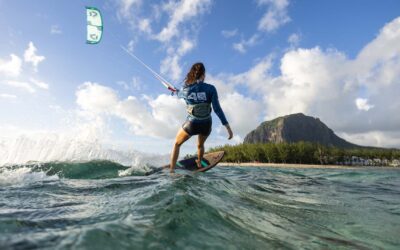WINGFOIL WATERSTART TECHNIQUES: TIPS TO MASTER THIS KEY SKILL
The waterstart in wingfoiling is the crucial step that marks your transition from beach training to real sessions on the water. While this maneuver might seem intimidating at first, it quickly becomes second nature with the right technique and a few adjustments. Once mastered, you’ll gain independence and fully enjoy the unique feeling of wingfoiling.
This guide shares the essential keys to successfully complete your waterstart, common mistakes to avoid, and practical tips to help you progress faster.
Why the Waterstart Is Essential in Wingfoiling
The waterstart allows you to get up on the board without wasting energy and to take off efficiently, even in light to moderate wind. Unlike other sports like windsurfing or kitesurfing, wingfoiling requires solid control of the wing while managing balance on the board. A real challenge, but one that’s incredibly rewarding once you nail it!
Preparation Before Attempting a Waterstart
Before jumping in, make sure you’re comfortable with the basics of wingfoiling, especially:
- Handling the wing on the beach, practicing hand transitions and moving around
- Finding and maintaining balance on the board
- Understanding wind conditions and choosing a beginner-friendly spot
💡 Pro tip: Start on flat water with moderate wind (12 to 18 knots) for your first attempts.
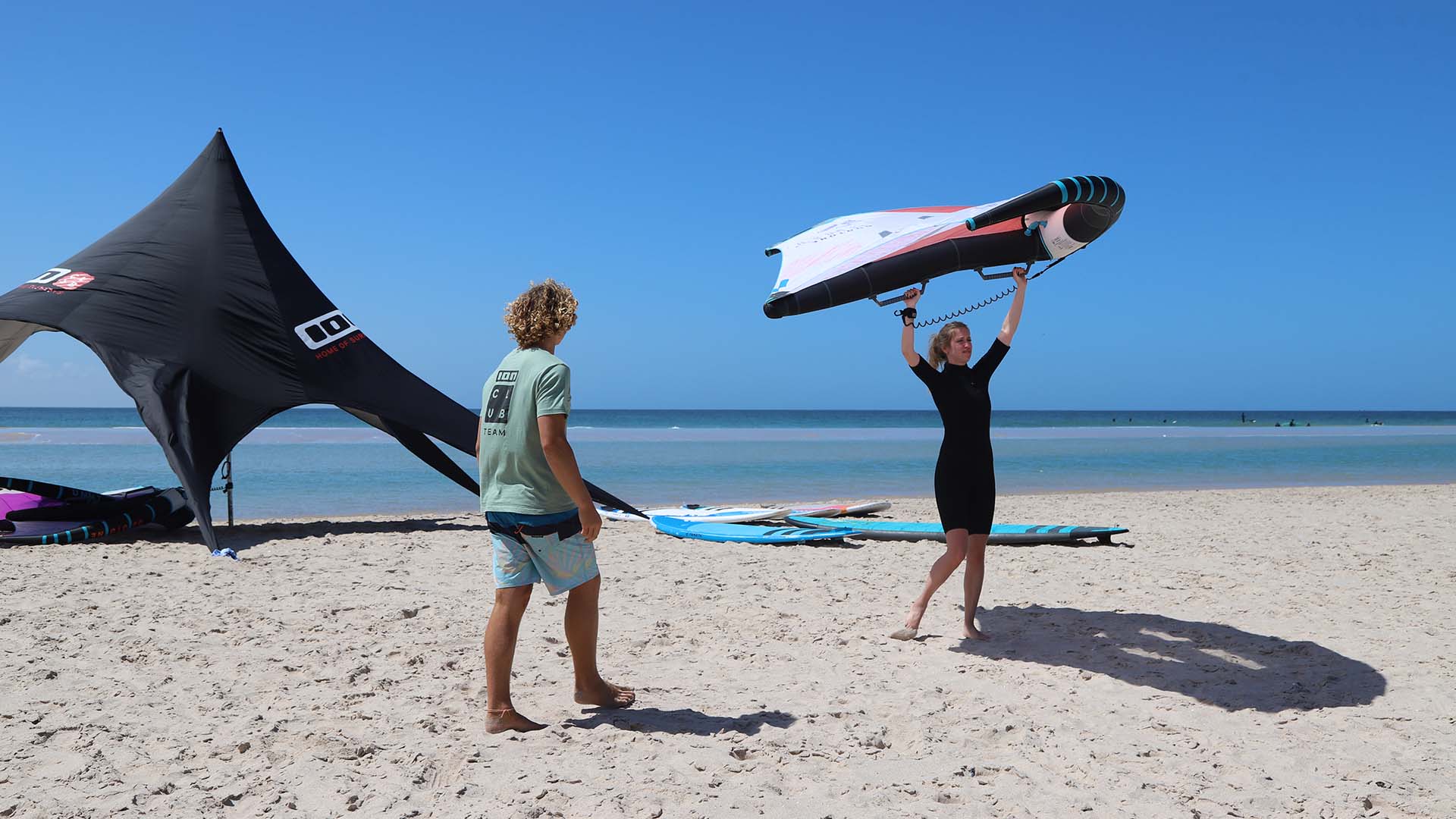
KEY STEPS FOR A SUCCESSFUL WATERSTART
1. Initial Positioning
It all begins with the right position in the water. Face the board into the wind, with your wing slightly above you to catch enough power.
- Sit on the board with your legs on each side
- Hold the wing with one hand on the front handle and the other on the back handle
- Keep the board stable by adjusting your balance gently

2. Get Ready to Stand
The goal is to generate enough power from the wing to stand up without rushing it.
- Angle the wing slightly forward to catch the wind
- Push with your legs while pulling gently on the wing
- Once standing, keep a low stance with bent knees to maintain balance
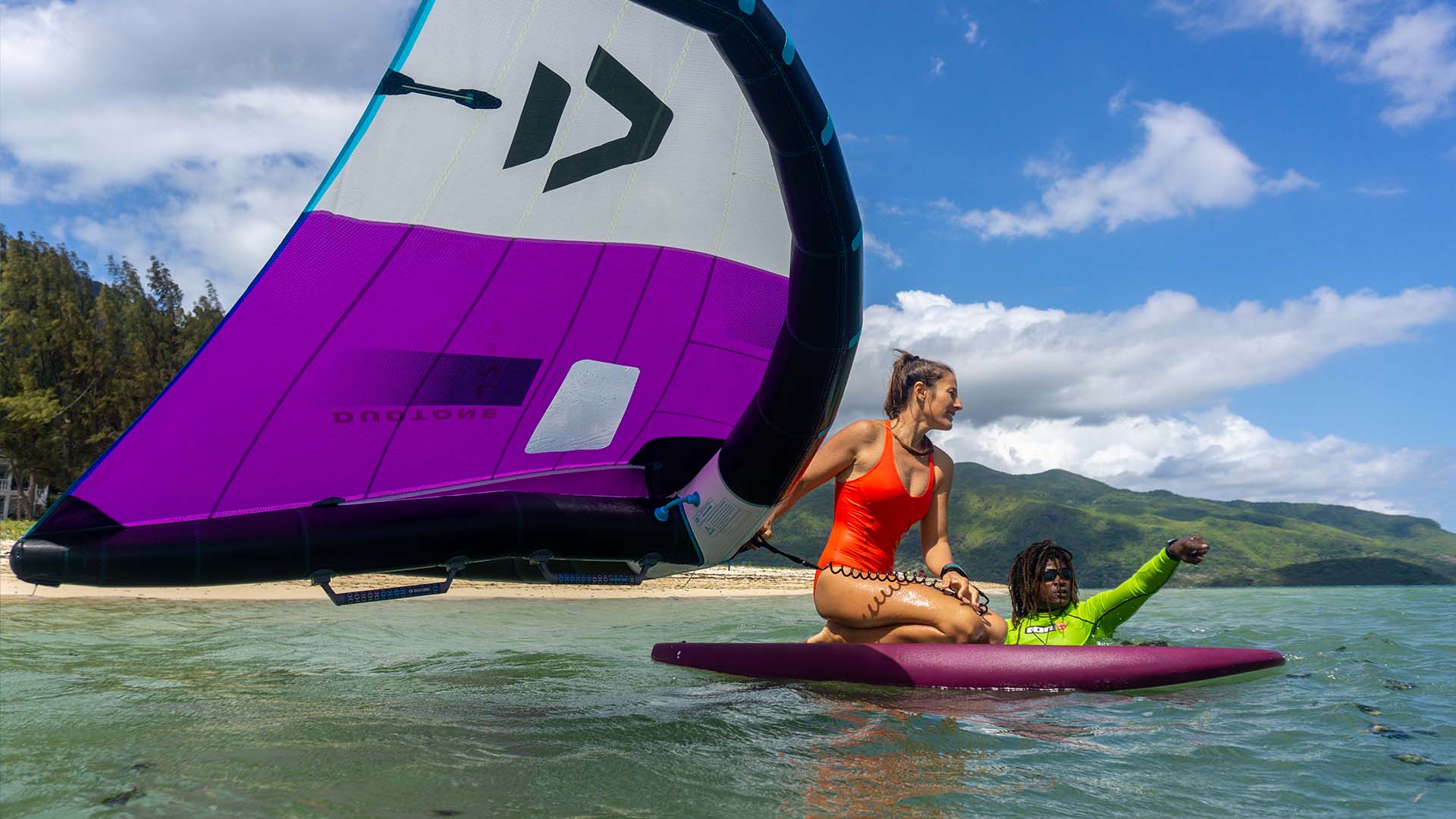
3. Stabilization and Takeoff
This is the point where you move from floating to gliding.
- Stay relaxed and let the board gain speed gradually
- Adjust the wing position to maintain steady lift
- If you lose speed, use a few pumping motions with the wing and board to re-engage
💡 Advanced tip: Learn to anticipate gusts and use the wind’s power to lift off smoothly.

COMMON MISTAKES AND HOW TO AVOID THEM
1. Rushing to Stand
The most common mistake! Trying to stand up too quickly usually causes a loss of balance. Take your time and wait until the wing gives you enough pull before rising.
2. Incorrect Wing Position
If the wing is too vertical or too low, you’ll either lack power or fall backward. Keep it at a 45° angle to the water surface for optimal lift.
3. Looking Down
It’s tempting to look at your feet or the wing, but that throws off your posture. Always look in the direction you want to go to maintain control.
TIPS FOR FAST PROGRESS
1. Work on Balance and Flexibility
The waterstart requires good coordination between legs and arms. Strengthening your legs and core can really boost your performance.
2. Use the Right Foil and Board
- Start with a board that has plenty of volume – it makes your first attempts much easier
- Choose a stable, forgiving foil – especially if you’re a beginner
3. Take Lessons with an Instructor
An experienced instructor can correct you in real time and help you progress much faster. At ION CLUB, our lessons break down every step of the waterstart and offer tips tailored to your level.
BEST ION CLUB DESTINATIONS TO LEARN THE WATERSTART
Some spots are perfect for learning to waterstart in ideal conditions:
1. Karpathos, Greece
With different spots suited for progression, you’ll start at Chicken Bay with flat, turquoise water, then move to Gun’s Bay as wind gets stronger, and eventually try Devil’s Bay for advanced conditions.
2. Le Morne, Mauritius
The protected lagoon at Le Morne is perfect for learning in complete safety. Calm waters and steady wind make it a dream spot for beginners.
3. Safaga, Egypt
Flat water and steady thermal winds make Safaga a top destination to master your waterstart. Warm water year-round is a nice bonus too!
4. Costa Calma, Fuerteventura
Costa Calma offers great conditions for practicing in moderate wind: ideal for improving step by step.
Final Tips Before You Start
- Be patient and persistent – learning the waterstart takes time
- Observe others – watching experienced riders helps you understand body position and timing.
- Enjoy the process – even if it doesn’t click right away, progress at your own pace and have fun
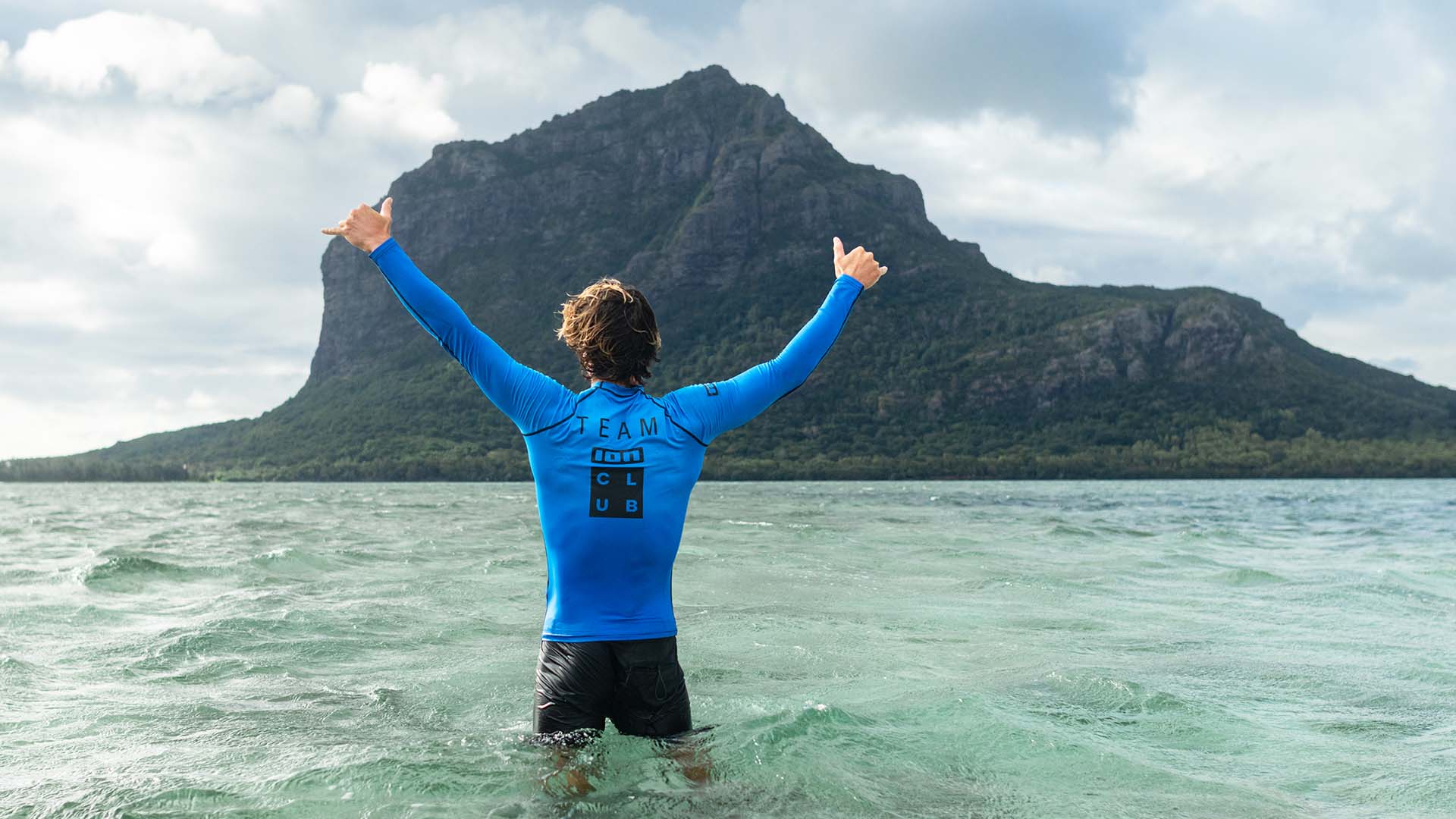
With these techniques and the support of ION CLUB’s expert instructors, you’ll have all the tools to master the waterstart in no time. Once you do, a whole new world of riding opens up – and every session becomes a new kind of thrill.
HOW TO CHOOSE YOUR KITESURFING GEAR IN 2025
HOW TO CHOOSE YOUR KITESURFING GEAR IN 2025Choosing the right gear is essential to progress and enjoy every session to the fullest. In 2025, technological innovations continue to transform kitesurfing with lighter kites, more versatile boards, and smarter accessories....
HOW TO CHOOSE THE BEST WINGFOIL GEAR IN 2025: A PRACTICAL GUIDE
HOW TO CHOOSE THE BEST WINGFOIL GEAR IN 2025: A PRACTICAL GUIDEWingfoiling has become one of the fastest-growing watersports, and every year brings new innovations that make gear more accessible and high-performing. Whether you're a beginner or an experienced rider,...
WHAT TO DO WHEN THERE’S NO WIND? FUN ALTERNATIVES FOR WINDLESS DAYS
WHAT TO DO WHEN THERE’S NO WIND? FUN ALTERNATIVES FOR WINDLESS DAYSWhen the wind isn’t blowing, don’t panic! Windless days can actually be the perfect opportunity to explore other watersports and enjoy your spot in a different way. Whether you’re in Mauritius,...

